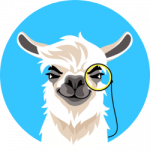What is Upland?
Upland is on its mission to build the world’s largest open digital economy with a web3 foundation, which will be a pivotal part of the future “Open Metaverse.” Today, Upland is one of the most widely-used web3 platforms, with 3,000,000+ registered accounts, an average of 30,000+ daily active players, close to 300,000 unique land owners, and 6,000,000+ NFTs sold.
The Upland platform was launched in 2019 as a virtual property trading game mapped to the real world. It introduced an in-game token called UPX which can be bought with fiat or crypto currency at a fixed exchange rate of $1 for 1,000 UPX. UPX is not traded on external exchanges. It is used as a medium-of-exchange for a wide variety of purposes, such as minting properties, purchasing digital assets in the Upland store, and powering various in-game activities and marketplace transactions.
Alongside its impressive growth in the community of players, Upland has transformed into a layer 1 metaverse, delivering the foundational infrastructure of an open, immersive web, including identity, liquidity, currency, land, no-code NFT creation, fiat on/off ramps, and governance. This was achieved by opening the entire ecosystem to 3rd party developers through a set of comprehensive APIs that allow anyone to cast any type of new value into the ecosystem and also expand on the existing Upland functionality, mechanics, and services.
As part of its strategy to enable an open architecture and platform services for entrepreneurs, creators, and developers to create new forms of value, Upland needed to solve the problem of providing a sustainable business model to support such a vast creator platform and to establish sustainable incentivization loops and network effects. The solution was introduced in 2021 with SPARKLET – a utility token that, together with a set of tools and mechanisms, allow stakeholders to create and power any non-living element in Upland.
At its core, SPARKLET fuels all value creation in Upland. It is the resource required for world-building, joint community projects, no-code NFT minting, and “manufacturing” of 3D map NFTs such as cars or decor items and more.
